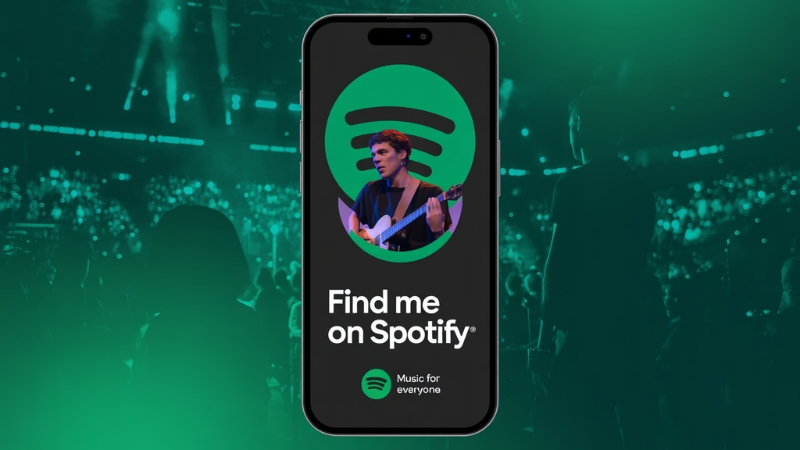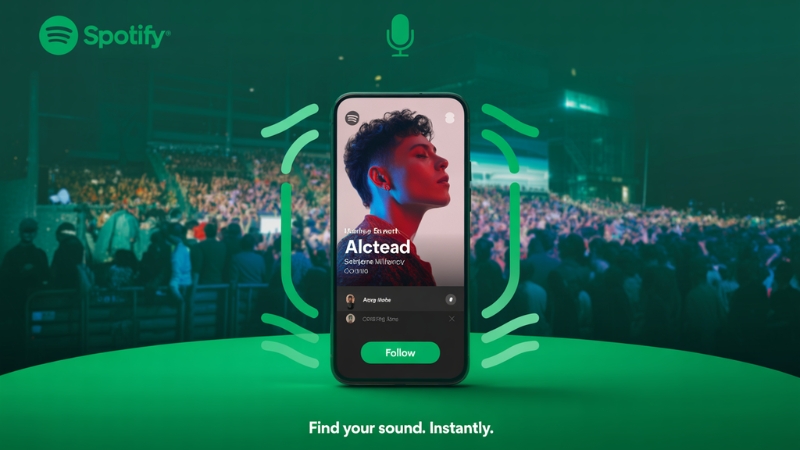
Optimizing Your Spotify Artist Profile for Voice Search Visibility

Voice search is revolutionizing how Spotify fans discover music. By optimizing your artist profile to answer voice queries, you enhance the likelihood of getting discovered through voice assistants and smart speakers. With minimal changes to your profile, you can match natural request queries like "find new hip-hop artists" or "play chill indie music."
Streaming Mafia is here to let you know everything about Optimizing Your Spotify Artist Profile for Voice Search Visibility! Let’s dive into it!
What is Spotify Artist Profile Optimization?
Spotify Artist Profile Optimization is a process of optimizing one's artist profile to connect with a larger number of listeners and achieve a bigger fanbase. It includes filling out the profile with active material and authentic content to make it discoverable and engaging. The following constitutes optimization:
- Profile Picture & Cover Artwork: Select recognizable images that best represent your brand.
- Bio & Links: Write a short, engaging bio and include links to social media or a website.
- Artist's Favorite: Highlight your best song, playlist, or tour calendar on the top of your profile.
- Discography Organisation: Maintain releases with proper labeling and legible album/ single cover.
- Playlist Pitching: Pitch Your Music to Spotify's Editorial Playlists to Increase Your Reach
- Fan Engagement: Encourage fans to save your tracks and share your music.
- Verified Badge: Get the blue checkmark by verifying your Spotify for Artists profile.
Optimizing your profile allows Spotify's algorithm to recommend your music to even more listeners. It also makes your profile look legitimate and professional, increasing the likelihood of acquiring loyal fans. A well-managed profile can lead to increased streams, inclusion into playlists, and expansion.
What Happens When You Optimize Your Spotify Artist Profile for Voice Search Visibility

Optimizing your Spotify artist profile for voice search ensures that fans are able to find your music using natural voice commands. With the increasing popularity of smart speakers and voice assistants, most listeners are now looking for music by speaking.
By making your profile voice-search optimized, you are more likely to appear through these hands-free queries.
1. Improved Match to Natural-Language Queries
Conversational requests like "Play upbeat pop music" or "Get new indie musicians" are used by voice searches. Adding targeted keywords to your song titles, bio, and stage name ("upbeat pop" or "indie folk") makes Spotify's system suggest your tracks when the listener makes those requests.
2. Increased Opportunities to Be Featured in Spotify’s Voice-Controlled Playlists
Spotify forms dynamic playlists from voice search trends, such as "Working out music" or "Chill study music." If you've correctly labeled your tracks with moods, genres, and activities, then they could end up on these dynamic playlists, driving streams.
3. Increased discoverability on Smart Speakers
If someone requests "relaxing acoustic music" from Google Home, Alexa, or Siri, top-ranking profiles are optimized. Well-structured metadata, clear genre tags, and maintained artist branding assist the digital assistants in identifying and suggesting your tracks.
4. Increased Engagement from Hands-Free Listeners
Voice searchers tend to listen to music passively (while driving, cooking, or at the gym). The music that matches popular voice search queries will see increased plays from listeners who don't actively seek out music but instead trust voice commands.
5. Enhanced Algorithmic Recommendations
Spotify's AI takes into account voice search activity when making music recommendations. If your songs match common voice queries, the system can bump them in Discover Weekly, Release Radar, and similar personalized playlists.
Voice search optimization places your music in front of consumers who are more comfortable speaking than typing. As voice-enabled streaming continues to expand, artists who make the switch early will see a gain in discoverability and interaction. Optimize today to lead the pack!
Explaining the Process of Optimizing Your Spotify Artist Profile for Voice Search Visibility

With the popularity of voice devices like virtual assistants and smart speakers, optimizing a Spotify artist profile for voice search is vital to discoverability. It's a process that requires deliberate changes to make music appear when listeners issue natural, conversational queries.
Step 1: Simplify Your Artist Name & Track Titles
Clear and pronounceable names work best for voice search. Try to use simple spelling and no special characters that may perplex voice systems. For instance, "The Midnight Sound" will perform best compared to "TH3 M1DN1GHT $OUND."
Step 2: Add Natural Language Keywords
Update your song descriptions and album bio with words that consumers might enter vocally. Use genre classifications ("indie folk"), moods ("relaxing"), and activity ("workout music") to match popular vocal search queries.
Step 3: Optimize Metadata
Top tracks are tagged with correct genres, moods, and instruments so that Spotify's algorithm knows how to match a search like "uplifting piano music."
Step 4: Use Spotify for Artists Tools
Utilize the profile customization features to showcase your standout work. The "Artist's Pick" option allows you to pin tracks that are most relevant to popular search queries.
Step 5: Target Playlist Placement
Submit to Spotify's editorial playlists, in particular those that correspond to regular voice requests like "dinner party jazz" or "music to focus to." Step 6. Foster Natural Engagement Your fans who listen to and save your songs give positive feedback to Spotify's algorithm, making you more visible to related voice searches.
By doing these optimizations, you open your music to the increasing number of listeners who access music through voice commands. The trick is to predict how users search through verbal commands and adjust your profile based on that. Constant A/B testing and monitoring of performance through Spotify for Artists will evolve your voice search strategy over time.
Conclusion
With the rise of voice search, optimizing your Spotify profile makes sure you don't miss out on new listeners. Minor changes to your song titles, artist name, and profile information can make a big difference in how visible you are to voice queries. By making your music discoverable by voice queries, you're introducing new listeners to new streams. Implement these optimizations to your music today to keep pace with a world where music consumption is increasingly driven by voice.
We have covered everything about Optimizing Your Spotify Artist Profile for Voice Search Visibility! If you have more queries, feel free to reach us out!

